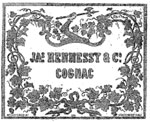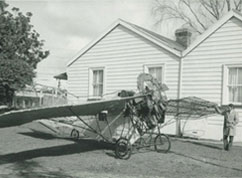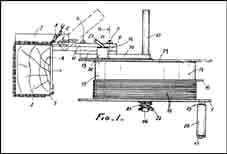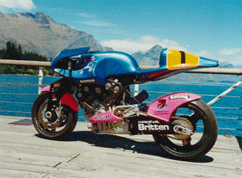Only 20 years after the signing of the Treaty of Waitangi, a patent system was established in New Zealand. The Intellectual Property Office of New Zealand continues to support and encourage creativity, innovation and enterprise by:
- examining and granting patents, trade marks, designs, and plant variety rights
- providing online access to the IP Registers, and raising IP awareness amongst New Zealand’s young entrepreneurs and business start ups.
The following timeline includes historic New Zealand IP law milestones and celebrates the registration of some iconic kiwi IP assets.
1860: The first New Zealand Patents Act was passed allowing the Governor to issue Letters Patent. The patent petitions and associated public notices were administered by the Colonial Secretary.
1861: New Zealand’s first patent was granted to Arthur G Purchas and James Ninnis for: “An Invention for the preparation of the fibre of the Phormium tenax (flax) and other plants for manufacturing purposes”. This patent was the subject of a WIPO Magazine feature in 2011.
WIPO Magazine (June 2011): Designing the Future – Celebrating the Past
A total of 21 patent petitions were received during this year.
1866: The first New Zealand Trade Marks Act was passed allowing the Registrar of Trade Marks to issue Registration Certificates. The legislation was largely based on the British Merchandise Marks Act of 1862.
1868: New Zealand’s first Trade Mark was registered in the name of JAS. Hennessy & Co. from France for “Brandy in bottles”.

1868: First New Zealand Registered Trade Mark (above)
1870: The Patents Acts of 1870 effectively established a Patent Office within the Colonial Secretary’s Office.
1882: The regional court offices became filing facilities for the Patent Office, enabling “same-day” paper document filing.
1883: The Patent Office came under the control of the Department of Justice.
1884: The Patents Act of 1883 came into force which formalised the patent application process and Patent Office structure, including the appointment of a Commissioner.
1889: The Patents, Designs and Trade-marks Act of 1889 established the New Zealand registered design system, patent agent register, and introduced ‘International and Intercolonial’ priority filing date claim provisions.
1890: New Zealand Design No. 1 was registered in the name of Siegfried Kohn of Wellington for a medal commemorating the 50th anniversary of Colony that was founded on 22 January 1840. The round medal design had images on both faces of the harbour and various vessels.
The first Annual Report from the Patent Office was published. 160 trade mark, 616 patent and 5 design applications were entered onto the IP Registers that year.
1891: Mr W H Hughes qualified and was registered as New Zealand’s first patent agent. Henry Hughes Limited was established in 1882 and is the oldest firm of patent and trade mark attorneys in New Zealand.
The New Zealand Gazette fortnightly supplement, entirely given over to the business of the Patent Office, began publication.

1906: Pearse Plane NZ Patent 21476 (above) - photo courtesy of Museum of Transport and Technology (MOTAT)
1906: NZ Patent No. 21476, titled “An improved aerial or flying machine”, was granted to Richard Pearse for his aileron invention. Pearse would later also invent and patent an aeroplane-helicopter in 1943 (NZ Patent No. 87637).
1911: Patent examination was widened to include investigating claim novelty and whether the claims were directed to “proper” or patentable subject matter.

1912: Edmonds Baking Powder Trade Mark (above)
1912: The iconic “Edmonds Baking Powder” Trade Mark (NZ Trade Mark No. 10823) was applied for and registered. You can discover how many times this registration has been renewed here: IPONZ Trade Mark Search.
The first Patent Office Journal was published replacing the Gazette supplements.
War time provisions: During World War I and II, special legislation was passed to enable the Governor in Council to avoid or suspend registering Patents, Trade Marks and Designs from subjects of states at war with New Zealand.
The time periods in which to pay fees and for filing documents could be extended, if the applicant could show that they had been prevented from doing so due to circumstances arising from the war.
1922: The Patent monopoly maximum term was extended from fourteen to sixteen years.
1929: The Registrar of Patents became known as the Commissioner of Patents, Trade Marks and Designs.
1936: 924 Trade Mark, 1837 Patent and 124 Design applications were received.
1946: The first technical specialist patent examiners were appointed, reflecting the Patent Office’s continued efforts to raise examination quality.
1948: A considerable amount of public pressure calling for changes in Patent administration led to a Commission of Inquiry headed by the Solicitor General.

1953: Electric Fence Winding Reel (above)
1953: New Zealand’s patent, trade mark and design legislation (Acts and Regulations) was substantially revised following the Commission of Inquiry and influence of the British patent law reform that had culminated in the United Kingdom Patent Act of 1949.
H J Gallagher invents a “wire-winding reel for electric fences” (NZ Patent No. 104134). Gallagher went on to export his electric fencing technology to the world.
1961: Bill Hamilton patented a craft fitted with a jet propulsion unit (NZ Patent No. 125495), and the modern day “jetboat” was born. This was commemorated in 2007 as part of NZ Post’s ‘Clever Kiwis’ line of postal stamps.
1973: A new IP asset registration system was added under the New Zealand Plant Varieties Act. The New Zealand Plant Varieties Office was first established under the Ministry of Agriculture and Fisheries.
1976: The first New Zealand Plant Variety Right was granted to Sam McGredy Roses International for the Rose variety 'Matangi'.
1977: The Patent Office was relocated to Lower Hutt from Wellington.
1981: The Plant Varieties Act was extended to include all higher plant species. New Zealand became a member state of the International Union for the Protection of New Varieties of Plants (UPOV).
1987: An amendment to the Trade Mark Act meant that the New Zealand trade mark classification schedule could now include service classes.
The Plant Variety Rights Act 1987 superseded the Plant Varieties Act 1973.
1989: The Poetry computer database was created for intellectual property records. This was the first time intellectual property records had been computerised.
1991: The Plant Variety Rights Office came under the control of the Ministry of Commerce (now known as the Ministry of Business, Innovation and Employment).
1992: New Zealand became a member of the Patent Co-Operation Treaty (PCT).

1994: Britten 'super bike' (above)
1994: The maximum patent monopoly term was extended from 16 to 20 years, and new rules and regulations are incorporated as New Zealand adopts the PCT International and National phase entry system and aspects of the World Trade Organization TRIPS agreement.
The Patent Office introduced the AREV computer database, improving patent, trade mark and design record searching capabilities.
The legal definition of a trade mark “sign” was expanded to include colour marks like NZ TM No. 285611 [‘Cadbury purple’ for chocolate blocks, bars and tablets].
John Britten patented structural features on his V1000 superbike (NZ Patent No. 255607).
1994: The Plant Variety Rights Act 1987 was amended to allow the protection of varieties of fungi.
1995: The Patent Office came under the control of the Ministry of Commerce (now known as the Ministry of Business, Innovation and Employment).
1997: The Patent Office became known as the Intellectual Property Office of New Zealand (IPONZ), and the 5 working day examination timeframe was introduced as a central IPONZ processing standard.
1998: The IPONZ website was launched with an online search engine for Trade Marks, and general information about application processes, forms and fees.
1999: The Trade Marks Act was amended allowing collective trade marks to be registered. A collective mark is owned by an association whose members use the mark to identify themselves with the product or service characteristic(s) set by that particular association. For example, a wine growers’ association collective mark where the wine is produced from grapes grown in a specific location.
2000: The IPONZ website was upgraded to add online search engines for Patents and Designs. In the year ending June 30, 2000 IPONZ received 22,771 Trade Mark applications, 4,027 Patent applications and 976 Design applications.
2001: IPONZ launched a toll-free help line (0508-4-IPONZ) for general inquires, and started publishing patent and trade mark hearing decisions online.
2002: The IPONZ website self service facilities were expanded to include online trade mark application filing and patent, trade mark and design registration renewals.

2003: New Zealand trade mark law reform (above)
2003: In August, the Trade Marks Act 2002 came into force and substantially updated New Zealand’s trade mark law.
Important legislative reforms included:
- A clearer definition of the rights conferred by a registered trade mark,
- Simplifying and streamlining the trade mark application process (thereby reducing business compliance costs),
- Establishing the Māori Trade Mark Advisory Committee to provide independent opinion about the appropriateness of registering some trade marks that contain Māori text and imagery in relation to the specific goods or services,
- New measures to deter pirating of copyright works and counterfeiting of trade marks, and
- Strengthened protection for well-known trade marks.
The Plant Variety Rights Office is merged with IPONZ.
2005: IPONZ introduced an online correspondence filing facility on its website.
2006: Record levels of IP applications were recorded in New Zealand and by the World Intellectual Property Organization (WIPO).
IPONZ moves back into Wellington.
2007: IPONZ and IP Australia completed a Concurrent Trade Mark Examination benchmarking study.
2008: The IPONZ website is upgraded with a suite of new online services and IP education resources. These included an online filing system for Designs and Patents, a searchable library of frequently asked questions, and a section on Copyright.
2009: ‘View IP History’ is added to the IPONZ website self service facilities giving authorised users (for example: an applicant or their patent attorney) secure access to their IPONZ case files.
The New Zealand and Australian governments announce a Single Economic Market outcomes framework, which includes a single trans-Tasman regulatory framework for patent attorneys.

2010: World leading IP education resource (above)
2010: New Zealand became the first country in the world to have a national curriculum IP teaching professional resource – Creative Directions.
IPONZ won the Vero Excellence in Business Award for Government Services.
IPONZ website trade mark and design search engines began displaying thumbnail images in search results.
2011: An amendment to the Designs Act set out the circumstances and procedure for restorations. This brought Design legislation in line with that of other types of IP.
The Major Events Management Act 2007 provides a new layer of protection for major sponsor IP owners to combat unauthorised exploitation or ‘ambush marketing’ at major events such as the Rugby World Cup 2011.
2012: The IPONZ case management system is launched.
New Zealand acceded to the Madrid Protocol relation to the International Registration of Trademarks.
New Zealand ratified the Singapore Treaty on the Law of Trademarks.
2013: New Zealand acceded to the Nice Agreement concerning the International classification of trade marks goods and services.
Australia and New Zealand signed a bilateral arrangement for implementing the Trans-Tasman patent attorney regime.
2014: The Patents Act 2013 fully commenced and the Patents Regulations 2014 came into force.
The IPONZ-SIPO bilateral arrangement is signed in Wellington New Zealand.
2015: The Patents (Trans-Tasman Patent Attorneys and Other Matters) Amendment Bill introduced.
2017: The Patents (Trans-Tasman Patent Attorneys and Other Matters) Amendment Bill commenced. Its key changes included the establishment of a single trans-Tasman patent attorney regime.
The Geographical Indications (Wine and Spirits) Registration Act 2006 commenced, creating a New Zealand register for geographical indications and allowing geographical indications to be registered in New Zealand for wines and spirits.
2020: IPONZ celebrated its 150th anniversary.
2023: The Plant Variety Rights Act 2022 commenced and the Plant Variety Rights Regulations 2022 came into force.
2024: Following the terms of the New Zealand - European Union Free Trade Agreement, New Zealand extended IP protection to a range of geographical indications from the European Union. The Geographical Indications (Wine and Spirits) Registration Act 2006 is renamed as the Geographical Indications Registration Act 2006.
Research links
New Zealand’s IP Registers are a valuable source of historical and technical information. Archives New Zealand’s collection includes patent records from 1861 through to fifty years before today. Information about applications and registrations made within the last fifty years can be assessed using the IPONZ online search engines. New Zealand Acts, Bills and Regulations are available via the Parliamentary Counsel Office websites.
